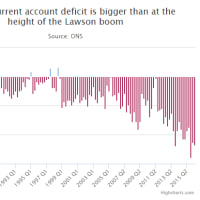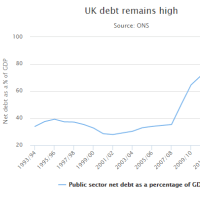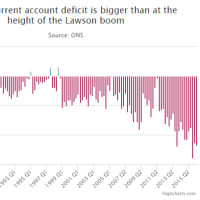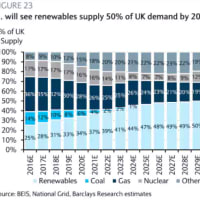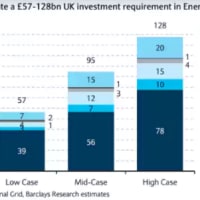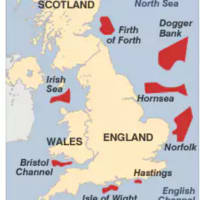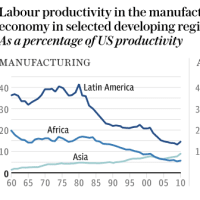Dollar surge endangers global debt edifice, warns BIS
(米ドル急騰で世界の債務の楼閣がやばい、とBIS)
By Ambrose Evans-Pritchard
Telegraph: 1:16PM GMT 07 Dec 2014


(米ドル急騰で世界の債務の楼閣がやばい、とBIS)
By Ambrose Evans-Pritchard
Telegraph: 1:16PM GMT 07 Dec 2014
Bank for International Settlements concerned about underlying health of world economy as dollar loans to emerging markets increase rapidly
新興市場の米ドル建て融資が急増しているので、BISが世界経済の基礎体力を心配しています。
Off-shore lending in US dollars has soared to $9 trillion and poses a growing risk to both emerging markets and the world's financial stability, the Bank for International Settlements has warned.
米ドルのオフショア融資残高が9兆ドルまで急増し、新興市場と世界の金融安定性に対して益々大きなリスクを突き付けている、とBISがワーニングしています。
The Swiss-based global watchdog said dollar loans to Chinese banks and companies are rising at annual rate of 47pc. They have jumped to $1.1 trillion from almost nothing five years ago. Cross-border dollar credit has ballooned to $456bn in Brazil, and $381bn in Mexico. External debt has reached $715bn in Russia, mostly in dollars.
スイスに拠点を置く同国際監視機関によると、中国の銀行や企業に対する米ドル建て融資が年47%の伸び率で増えているそうです。
5年前はほぼゼロだったところから1.1兆ドルまで急増しました。
米ドル建ての国際融資はブラジルで4,560億ドル、メキシコ3,810億ドルにまで膨らみました。
ロシアの対外債務は7,150億ドルに達しましたが、その大半はドル建てです。
A chunk of China's borrowing is disguised as intra-firm financing. This replicates practices by German industrial companies in the 1920s, which hid their real level of exposure as the 1929 debt trauma was building up. "To the extent that these flows are driven by financial operations rather than real activities, they could give rise to financial stability concerns," said the BIS in its quarterly report.
企業間ファイナンスを装った中国の借入はかなりの金額に上ります。
これは1920年代にドイツの工業製品会社が行ったやり口を真似るもので、これらの企業は1929年の債務トラウマが高まる中で本当のリスクを隠していました。
「これらの資金の流れが実際の活動よりも金融オペレーションに動かされているという点で、金融安定性懸念を高める可能性がある」とBISの四半期報告は述べています。
"More than a quantum of fragility underlies the current elevated mood in financial markets," it warned. Officials are disturbed by the "risk-on, risk-off, flip-flopping" by investors. Some of the violent moves lately go beyond stress seen in earlier crises, a sign that markets may be dangerously stretched and that many fund managers do not really believe their own Goldilocks narrative.
また、「現在の金融市場の高揚ムードの下には、少なからぬ脆弱性が存在する」と警告しました。
当局は投資家の「リスク・オン、リスク・オフ、掌返し」に苛立っています。
最近の激しい動きの中には先の危機で見られたストレスを超えるものがあります。
これはマーケットが危険水域まで限界に近付いている可能性や、多くのファンドマネジャーが自分で語るゴルディロックス経済物語を本当は信じていないという兆しです。
"Mid-October's extreme intraday price movements underscore how sensitive markets have become to even small surprises. On 15 October, the yield on 10-year US Treasury bonds fell almost 37 basis points, more than the drop on 15 September 2008 when Lehman Brothers filed for bankruptcy."
「10月中旬の日中の極端な価格の動きは、マーケットが僅かなサプライズにすら極めて敏感に反応するようになったことを浮き彫りにしている。10月15日に米国債10年物の金利は37BP近く下落したが、これは2008年9月15日にリーマン・ブラザーズが破産申請した時よりも大幅な下落だ」
"These fluctuations were large relative to actual economic and policy surprises, as the only notable negative piece of news that day was the release of somewhat weaker than expected retail sales data for the US one hour before the event," it said.
「このような変動は実際の経済的、政策的サプライズと比較すると大幅である。この日の唯一の目立った悪いニュースは、変動が起こる1時間前に発表された、予想よりも幾分軟調だった米小売売上データだけだった」
The BIS said 55pc of collateralised debt obligations (CDOs) now being issued are based on leveraged loans, an "unprecedented level". This raises eyebrows because CDOs were pivotal in the 2008 crash.
BISによれば、今やCDOの55%がレバレッジ・ローンに基づくものだそうで、これは「前例のない水準」だそうです。
CDOは2008年のクラッシュで極めて重要だったのですから、これは驚きを呼びます。
"Activity in the leveraged loan markets even surpassed the levels recorded before the crisis: average quarterly announcements during the year to end-September 2014 were $250bn," it said.
「レバレッジ・ローン・マーケットにおける活動は、危機前のピークすら超えた。2014年9月末までの1年間の平均四半期発表は2,500億ドルだった」
BIS officials are worried that tightening by the US Federal Reserve will transmit a credit shock through East Asia and the emerging world, both by raising the cost of borrowing and by pushing up the dollar.
BIS当局者は、FRBの引き締めが東アジアと新興市場を通じ、借入コストを押し上げ米ドルを上昇させて、信用ショックを伝播させるのではないかと懸念しています。
"The appreciation of the dollar against the backdrop of divergent monetary policies may, if persistent, have a profound impact on the global economy. A continued depreciation of the domestic currency against the dollar could reduce the creditworthiness of many firms, potentially inducing a tightening of financial conditions," it said.
「米ドルが異なる金融政策を背景に上昇することは、長期化すれば、世界経済に著しい影響をもたらす。自国通貨が米ドルに対して継続的に下落すれば、多くの企業の信用を損ない、金融引き締め的状況を引き起こす可能性がある」
The dollar index (DXY) has surged 12pc since late June to 89.36, smashing through its 30-year downtrend line. The currency has risen 55pc against the Russian rouble and 18pc against Brazil's real over the same period.
DXYは6月下旬から30年間に亘るダウントレンドを外れ、12%も急上昇して89.36に到達しました。
米ドルは同期間にロシア・ルーブルとブラジル・レアルに対して55%と18%上昇しました。
Hyun Song Shin, the BIS's head of research, said the world's central banks still hold over 60pc of their reserves in dollars. This ratio has changed remarkably little in forty years, but the overall level has soared -- from $1 trillion to $12 trillion just since 2000.
BISのヘッド・オブ・リサーチ、ヒュン・ソン・シン氏は、世界各国の中銀は外貨準備の60%以上をドル建てで保有していると言います。
この割合は40年来驚くほど変わっていませんが、全体的に急上昇しました(2000年から1兆ドルも増えて12兆ドル)。
Cross-border lending in dollars has tripled to $9 trillion in a decade. Some $7 trillion of this is entirely outside the American regulatory sphere. "Neither a borrower nor a lender is a US resident. The role that the US dollar plays in debt contracts is very important. It is a global currency, and no other currency has this role," he said.
米ドル建ての国際融資の残高は10年間で3倍の9兆ドルになりました。
この内の約7兆ドルは完全に米国規制当局の管轄外にあります。
「借手も貸手も米国外だ。米ドルがデット・コントラクトで演じている役割は非常に重要だ。これは世界通貨であり、この役割を持つ通貨は他にはない」
The implication is that there is no lender-of-last resort standing behind trillions of off-shore dollar bank transactions. This increases the risks of a chain-reaction if it ever goes wrong. China's central bank has ample dollar reserves to bail out its companies - should it wish to do so - but the jury is out on Brazil, Russia, and other countries.
つまり、数兆ドルに上るオフショアでの米ドル銀行間取引の後ろに控える最後の貸し手は存在しない、ということです。
これは何かあった場合に連鎖反応が起こるリスクを高めています。
中国人民銀行は自国の企業を(やろうと思えば)救済するために十分な準備を有していますが、ブラジル、ロシアなどはわかりません。
This flaw in the global system may be tested as the Fed prepares to raise interest rates for the first time in seven years. The US economy is growing at a blistering pace of 3.9pc. Non-farm payrolls surged by 321,000 in November and wage growth is at last picking up.
国際システムにおけるこのような欠陥は、FRBが7年ぶりに始めて利上げを行う準備を進める中で試されるかもしれません。
米経済は3.9%の高速成長を続けています。
11月の非農業部門の雇用者数は32.1万人も急増し、賃金の伸びも遂に追い付きつつあります。
Two years ago the Fed expected unemployment to be 7.4pc at this stage. In fact it is 5.8pc. The Fed's new "optimal control" model suggest that raise rates may rise sooner and faster than markets expect. This has the makings of a global shock.
2年前、FRBは失業率は現時点で7.4%になるだろうと予測していました。
実際は5.8%です。
FRBの新しい「オプティマル・コントロール」モデルは、利上げはマーケットの予想よりも早く、迅速に行われるかもしれないと示唆しています。
これはグローバル・ショックになるでしょう。
The great unknown is whether the current cycle of Fed tightening will lead to the same sort of stress seen in the Latin American debt crisis in the early 1980s or the East Asia/Russia crisis in the late 1990s. This time governments have far less dollar debt, but corporate dollar debt has replaced it, with mounting excesses in the non-bank bond markets. Emerging market bond issuance in dollars has jumped by $550bn since 2009. "This trend could have important financial stability implications," it said.
大いなるアンノウンは、今のFRBの引き締めサイクルが1980年代初頭の南米債務危機や1990年代終盤の東アジア金融危機やロシア危機と同じストレスをもたらすかどうかということです。
今回、政府の米ドル建て債務は遥かに少ないのですが、それは企業の債務に置き換わっており、非金融業の債券市場で益々増加しています。
新興市場の米ドル建ての債券発行額は2009年以降5,500億ドルも急増しました。
「このトレンドは金融安定性に重大な影響を持つかもしれない」
BIS officials are concerned that the risks may be just as great in this episode, though the weak links may not be where we think they are. Just as generals fight the last war, regulators have be fretting chiefly about bank leverage since the Lehman crisis.
BIS当局者は今回もリスクが同じ位に重大である可能性を懸念していますが、弱点は僕らが考えているようなところではないかもしれません。
先の大戦を戦った将軍のように、規制当局者はリーマン危機以降、主に銀行のレバレッジについて心配しています。
Yet the new threat may lie in non-leveraged investments by asset managers and pension funds funnelling vast sums of excess capital around the world, especially into emerging markets. Many of these are so-called "macro-tourists" chasing yield, in some cases with little grasp of global geopolitics.
しかし新たな脅威は、巨額の過剰資本を世界中、特に新興市場に送り出しているアセット・マネジャーや年金基金による、レバレッジ以外の投資に潜んでいるかもしれません。
これらの多くは金利を追い求めるいわゆる「マクロ・ツーリスト」であり、世界の地政学を殆どわかっていない場合もあります。
Studies suggest that they have a low tolerance for losses. They engage in clustering and crowd behaviours, and are apt to pull-out en masse, risking a bad feedback-loop. This could prove to be today's systemic danger. "If we rely too much on the familiar mechanisms, we may be missing the new vulnerabilities building up," said Mr Shin in a speech to the Brookings Institution last week.
調査から、これらの投資家の損失に対する受容性が低いことがわかっています。
彼らはイワシのように集団行動をとり、撤収する際も一斉に引き上げる傾向があり、悪循環を引き起こしかねません。
これが現在のシステミックな危険だと明らかになるかもしれません。
「精通した仕組みに過剰に依存すれば、新たな脆弱性の高まりを見逃す可能性がある」とシン氏は先週、ブルッキング財団でのスピーチで述べました。
The BIS has particular authority since its job is to track global lending. It was the only major body to warn of serious trouble before the Great Recession - and did so clearly, without the usual ifs and buts.
BISは国際融資のトラッキングが仕事であることから、これに関する権威です。
また、大不況の前に深刻なトラブルの可能性について、通常伴う言い訳や条件を付けずにはっきりと警告を出した唯一の主要機関でした。
It now warns that the world is in many ways even more stretched today than it was in 2008, since emerging markets have been drawn into the global debt morass as well, and some have hit the limits of easy catch-up growth.
新興市場までもが国際的な債務の泥沼に引きずり込まれており、簡単なキャッチアップ型成長の限界に達してしまった国もあることから、世界は多くの型治療で2008年よりも更に限界に達しつつある、と現在は警告しています。
Debt levels in rich countries have jumped by 30 percentage points since the Lehman crisis to 275pc of GDP, and by the same amount to 175pc in emerging markets. The world has exhausted almost all of its buffer
先進国の債務はリーマン危機から30%急増してGDPの275%に達しており、新興市場も同じ位増大して175%に達しています。
世界はバッファーをほぼ全て使い尽くしてしまいました。













